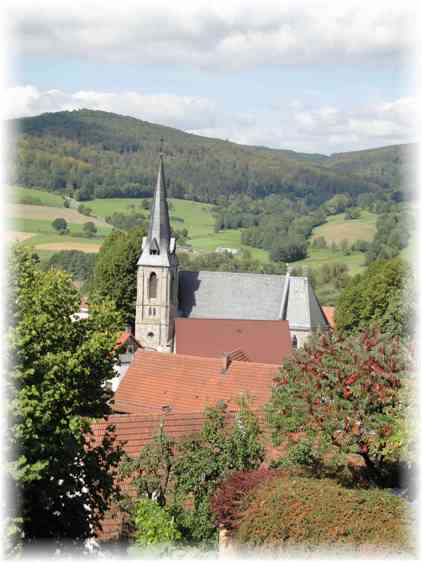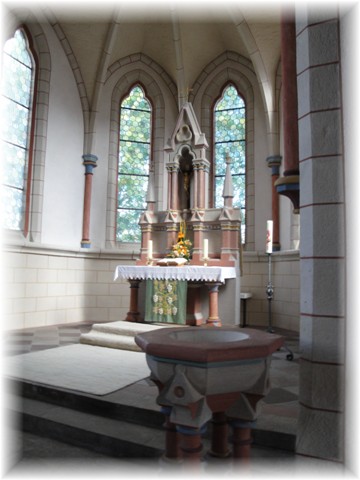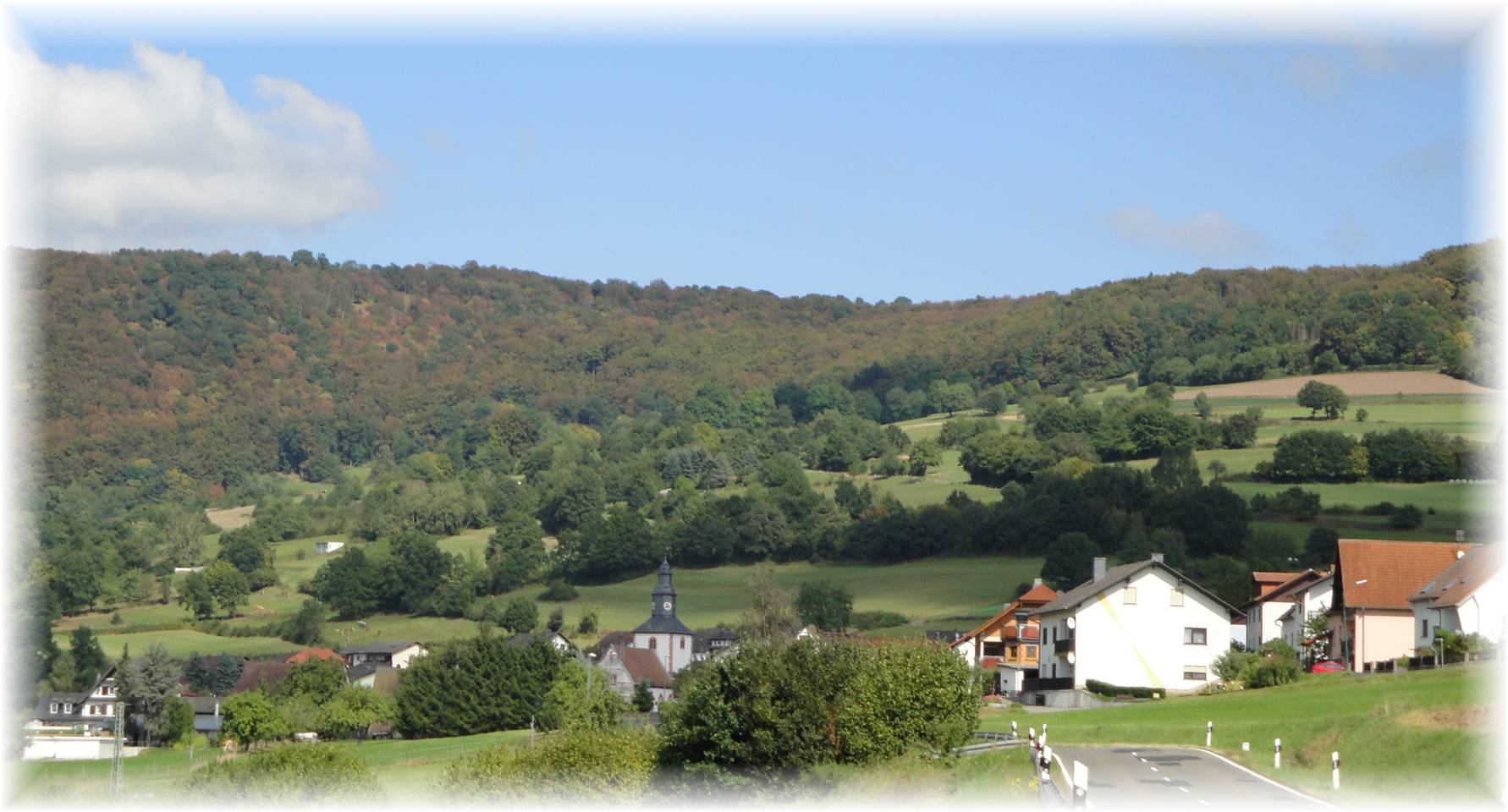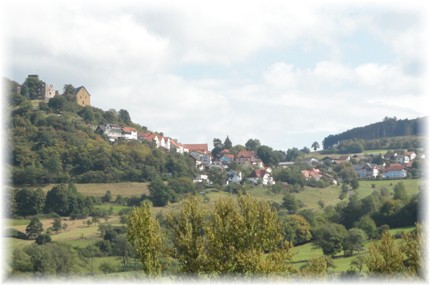The Sinntal Region of Hessen, Germany, Earliest Known Home of Nicholas Yager

View from Oberzell street of church tower and mountains beyond. Photo taken by V. Nuta.

efore he migrated to Virginia in 1717/1718, Nicholas probably moved within Germany. At that time, internal moves were not uncommon. The area surrounding the Sinntal region had been repeatedly ravaged by French armies, first during the Thirty Years' War in the early 17th century, then during the War of the Succession, when Louis the 14th of France sent armies through Pfalz and across the Rhine. Heidelberg was destroyed, as well as many of the castles on the Rhine. It was a time of upheaval, when the knights and nobility of Germany presided over fractured bits of ground where conditions changed rapidly depending on armies, the weather, the greed of the nobility, upon religion. Many of our ancestors were not serfs who had lived generation upon generation in small villages, but desperate people on the move.
Nicholas' naturalization papers, dated 13 July 1722, signed by Alexander Spotswood, state that Nicholas was a native of "Wickersbach" in Hesse."
When Nicholas was married to Anna Maria Sieber in 1705 in Marienthal, Pfalz, Germany, it was stated on his marriage record that his father was Paul Yager, of Meierspach, Germany. The text of the marriage record can be seen on my page devoted to Nicholas' time in Pfalz, Falkenstein, Pfalz.

Altar in Oberzell Church
There was a Paul Jager was born about 1635 or 36 whose name appears in Oberzell records of the Mottgers parish in Hesse. Two sons were christened there in 1681 and 1684, but there is no record of a son Nicholas. Paul Yager died in Weichersbach on 12 January 1719 at age 83. It is possible, however, that Paul Yager migrated to the vicinity after the birth of Nicholas, who had stated he was age 60 in 1738 and thus born in 1677 or 1678.
There is a birth record in the Mottgers parish for a Niclaus Yager, born 30 May 1676, to Hans Jager born in Heubach, and Konigunda Will, born in Oberkalbach and married on 21 February 1667 in Heubach. A godfather, Claus Eigenbrot, was described as a “young journeyman.” These Yagers lived in Oberzell and additionally had other children: Heinrich, born 6 December 1667, Jost, born 12 December 1672, Gela, born 13 March 1672, Catharina, born 14 July 1674, George, born 21 January 1679, and Anna, born 22 December 1684. Konigunda died on 5 February 1685.
Therefore, we are unsure as to who exactly was Nicholas’ father. As stated, Nicholas could have been born to Paul Yager in another location; or Hans could have had a second name of Paul.

Village of Weichersbach with 1783 church tower. Photo taken by V. Nuta.
Mottgers, Weichersbach, Oberzell
I visited the Sinntal region of Hessen, Germany, to see these three villages, associated, we believe, with our ancestor, Nicholas Yager. This area is, and was, very rural. Oberzell sits on the side of a low mountain on the border of Hessen with Bavaria, in the Rohn Mountains. The Rohn today is a UNESCO Biosphere, but only a few decades ago formed the border of Western and Eastern Germany.
Mottgers is in a valley, but its old church, higher on a hill, directly faces the ruins of Schwarzenfels, a medieval castle ruined during the Thirty Years’ War. The road out of Mottgers forks left and right. To the left is the road to Weichersbach, a tiny place with a church built in 1783. The road then winds higher and higher in a beautiful, bucolic area until one reaches the town of Oberzell, steep and very old.

View from Mottgers churchyard of Schwarzenfels, castle ruins at left.
The fork to the right leads up over a mountain pass by the town of Schwarzenfels and then down on the other side of the mountain into Bavaria.
This area is not far from the monastic community of Fulda, which may have controlled this area in early medieval times, but by the 14th century the area fell under the control of the Counts of Hanau. This family, by the time of the Reformation, was Lutheran, to the discomfort of the townsfolk of the City of Hanau, who were German Reform. These counts, after the Thirty Years’ War, were also known for inviting outsiders into their lands both to repopulate the area and to provide a safe harbor for religious dissidents, for example, inviting in the Huguenots to Hanau who started new industries. Probably these towns fell under the direct stewardship of the castle at Schwarzenfels, at the top of a mountain overseeing these villages at the time of Nicholas’ birth. Interestingly, the lands of the Counts of Hanau included an area in the Pfalz-Rhineland, due to a marriage, and this may have provided an explanation as to why Nicholas was located so far from his father's domicile. NEXT: Falkenstein, Pfalz
Copyright © 2011 Virginia Nuta